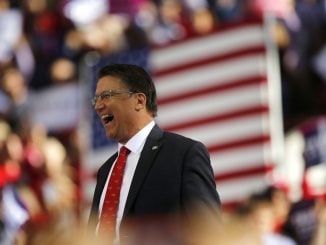
RALEIGH Students filled public schools across the state this week as teachers welcomed them with bright classrooms and open arms. Back to school came the same week as figures released from the state Department of Public Instruction showing North Carolina students’ test scores are up slightly in math and reading.End-of-grade performance in math showed that 47 percent of students were proficient, up from 44, and in reading the scores went from 45.1 percent to 45.8 percent last school year. The report also showed that for the first time, N.C.’s four-year graduation rate among all racial groups was more than 80 percent. That is the 11th straight year of improvement in the graduation rate. In 2005-06 it was around 63 percent.”If I could do a backflip over the graduation rate I would,” said N.C.’s DPI Superintendent June Atkinson.DPI also released a report card, ranking public schools on an A-F grading scale, which is based on a formula taking into account the students’ academic performance and rate of improvement. Approximately 75 percent of schools earned a grade of A,B or C on a 15-point grading scale.Kicking off back-to-school week, Gov. Pat McCrory visited Riverwood Middle School in Clayton, where he toured classrooms and met with teachers. Council of State members and legislators did the same, including DEQ Secretary Don van der Vaart, who spent time talking with Broughton High School students in Raleigh about careers in environmental science.The group was also spreading the word about the 4.7 percent teacher pay raise in the last state budget that brings average teacher pay to more than $50,000 for the first time in state history.However, the North Carolina Association of Educators, along with leading Democratic legislators, held a press conference Wednesday to refute the pay raise figures.President of the NCAE Mark Jewell called the Republican teacher pay claim into question. Jewell said the claim was not accurate, because it didn’t account for teacher turnover from year to year, saying that remaining teachers have more students and out-of-pocket expenses, despite recent pay increases.”Have appropriations for public schools increased?,” asked Jewell rhetorically. “Yes, but what [the governor] is not telling you is that there have been tens of thousands of more students. We have 4,900 fewer teachers with 35,000 more students.”Jewell criticized Republicans for not doing more while adding to the state’s Rainy Day Fund.Teacher pay is supplemented by local authorities in more than 90 of North Carolina’s 100 counties, wherein large tax base counties such as Wake may offer higher teacher pay supplements than more rural counties, such as Pasquotank, with less means to do so.Catherine L. Truitt, a former teacher and current senior education adviser to McCrory, said accounting for local supplements is the only way to measure average teacher pay and a method that has always been employed by the National Education Association.”I wish that all counties provided a supplement. I think we have about eight that don’t, but again that is a decision made at the local level,” said Truitt. “The Fiscal Research Division [of the N.C. General Assembly], which is a bipartisan group, has vetted our numbers and agreed we will be over $50,000 average teacher pay for the first time in state history.”When asked at Wednesday’s NCAE press conference what the average teacher pay in North Carolina was, if it was not the $50,000 per year level claimed by Gov. McCrory and other Republicans, Jewell did not provide a number.Sen. Erica Smith-Ingram (D-District 3) claimed the data does not back up the Republican assertion on the teacher pay milestone, citing 2007-2008 education spending levels as $9 billion while 2015-2016 spending was at $8 billion.”According to Department of Public Instruction, our public schools share of general funding has decreased by 13.7 percent since 1970,” said Smith-Ingram. “The cuts don’t end there. Education supply funding has been cut in half, 50 percent, since 2008.”McCrory took office in January 2013. Truitt thinks the spending priorities of former legislatures under Democrat control, as well as reactions to the 2008 recession, are largely responsible for why the state is not further ahead in its teacher pay goals.”The reason why cuts were made in the recession is because Democrats did not have any money in the Rainy Day Fund,” said Truitt. “So they slashed textbook funding from $111 million to $3 million; they froze teacher pay; and we fell in the rankings from 20th to 46th under three Democratic governors, and so we have been digging out of a hole since the governor took office and we have tripled textbook funding allotment.”As far as NCAE’s assertion that the current Rainy Day Fund should have been used to supplement teacher pay, Truitt said that is exactly the thinking that got state finances in trouble in the first place.Truitt, though, thinks the Republicans’ position is stronger, saying, “From where I’m sitting, we are the ones with the data and models to back up our claims and they are not.”



